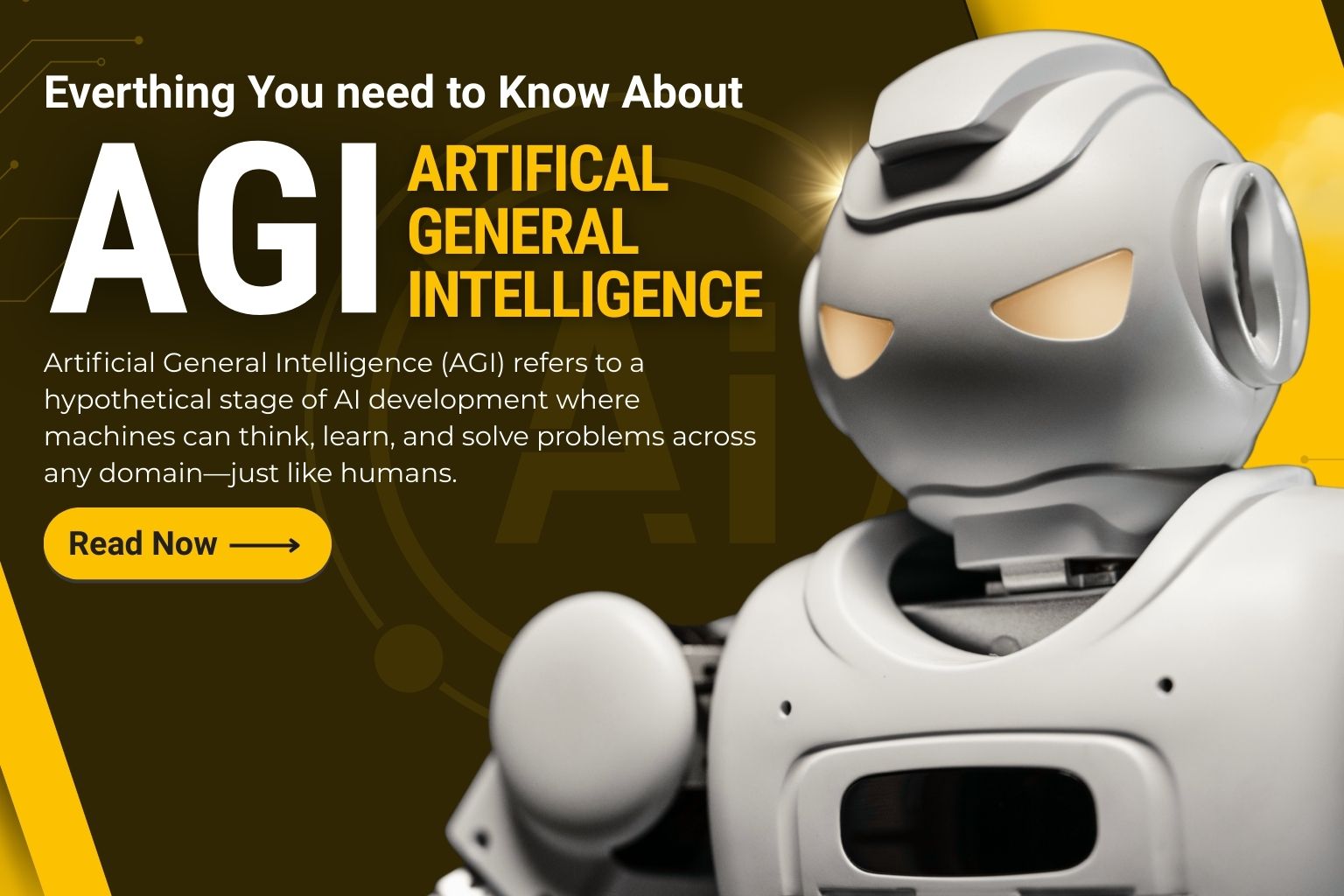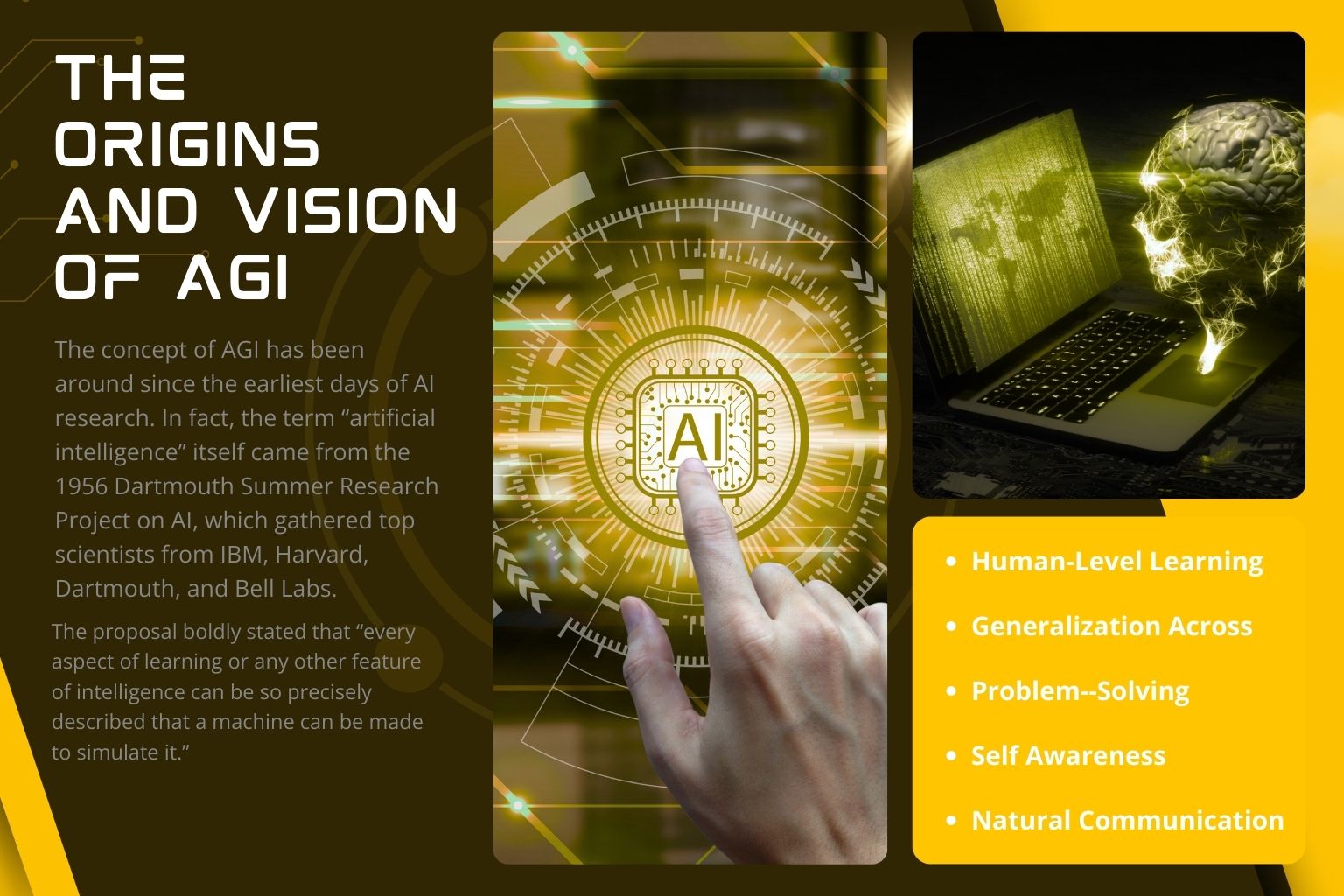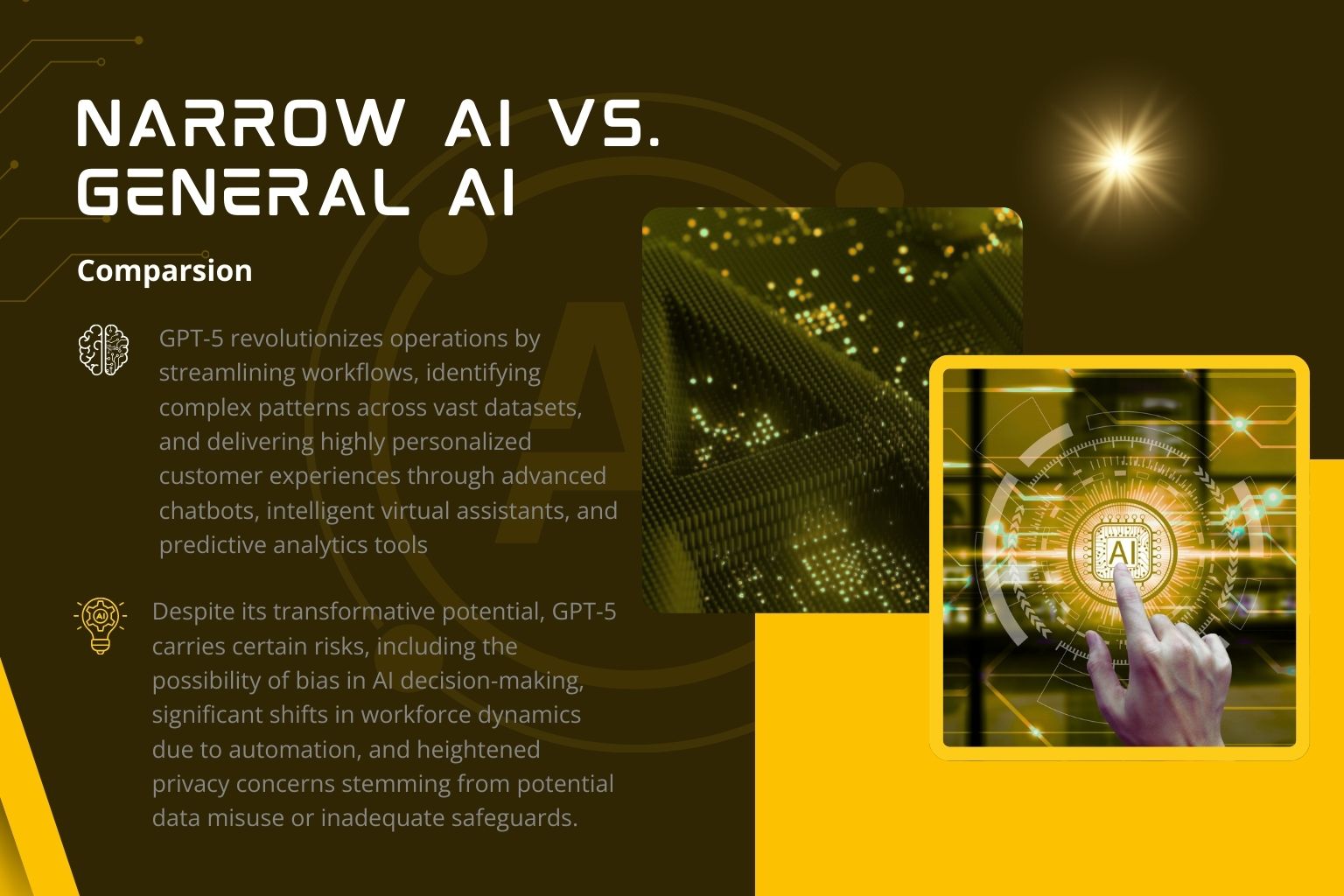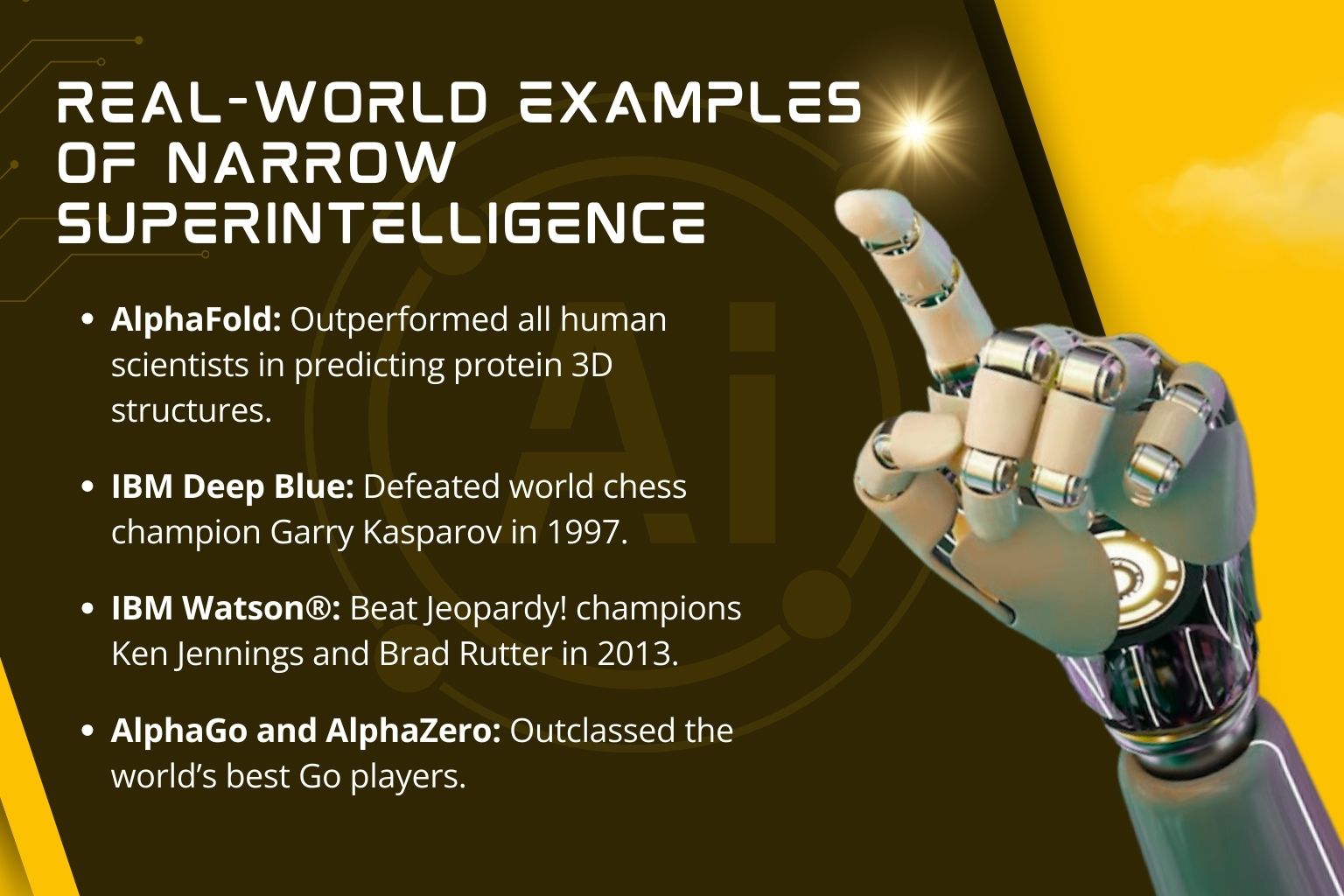Artificial General Intelligence (AGI): Everything You Need to Know
Smash Code
Sep 16, 2025

Artificial General Intelligence (AGI) is no longer a distant dream but an approaching reality, according to some of the world’s leading AI minds. Demis Hassabis, CEO of Google DeepMind, recently warned, “It’s coming… and I’m not sure society’s ready,” highlighting both the rapid progress and the lack of societal preparation. He added, “The progress in the last few years has been pretty incredible… we could be just a few years, maybe within a decade away,” underscoring the accelerating pace of breakthroughs. Echoing this sense of urgency, Elon Musk predicted, “If you define AGI as smarter than the smartest human, I think it’s probably next year, within two years.” Taken together, these perspectives suggest a future where AGI may emerge far sooner than most expect, demanding immediate attention to ethics, safety, and policy before its full power reshapes our world.
What Is Artificial General Intelligence (AGI)?
Artificial General Intelligence (AGI) refers to a hypothetical stage of AI development where machines can think, learn, and solve problems across any domain—just like humans. Unlike today’s AI, which is limited to narrow, specific tasks, AGI would be capable of human-level cognition and adaptability across all areas of knowledge.
In simple terms, AGI is the ultimate goal of AI research: replicating human intelligence in machines.
Following the release of powerful large language models (LLMs) and multimodal AI systems, predictions began to move faster.
A larger survey conducted by Grace et al. in October 2023 (published January 2024) asked 2,778 AI researchers about AGI timelines. Their estimate:
- 50% chance of machines outperforming humans in every task by 2047.
That’s 13 years earlier than the estimate from just one year before.
Let’s dive into the history of machine learning:
The Origins and Vision of AGI

The concept of AGI has been around since the earliest days of AI research. In fact, the term “artificial intelligence” itself originated from the 1956 Dartmouth Summer Research Project on AI, which brought together top scientists from IBM, Harvard, Dartmouth, and Bell Labs.
The proposal boldly stated that “every aspect of learning or any other feature of intelligence can be so precisely described that a machine can be made to simulate it.”
This vision inspired decades of research, but while we’ve built machines that can excel at specific tasks—from playing chess to diagnosing diseases—we still haven’t achieved true general intelligence.
Narrow AI vs. General AI

To understand AGI, it helps to compare it with narrow AI (what we use today).
- Narrow AI: Specialised systems that perform tasks in limited domains. Examples include self-driving cars, voice assistants, or medical diagnosis tools. They may outperform humans in their niche, but cannot operate outside it.
- General AI (AGI): A machine that can reason, learn, and adapt to any problem, much like a human brain does.
In 2007, AI researcher Ben Goertzel, influenced by DeepMind cofounder Shane Legg, popularised the term Artificial General Intelligence. He described it as the ability to solve problems in a non-domain-restricted way, just like humans.
Challenges of Building AGI
The road to AGI is filled with both philosophical and technological challenges:
- Philosophical Challenge: What exactly is “intelligence”? How do we define and measure it in machines? Can consciousness exist in software?
- Technological Challenge: Creating models with unprecedented versatility, designing reliable tests for cognition, and building enough computing power to sustain such systems.
AGI vs. Strong AI vs. Artificial Superintelligence
People often confuse AGI with other futuristic AI concepts. Here’s how they differ:
AGI vs. Strong AI
- strong AI: A term made famous by philosopher John Searle, which refers to truly conscious AI—a mind of its own.
- AGI: Focuses more on performance and adaptability, regardless of whether the machine is conscious.
While they overlap, strong AI is about consciousness, and AGI is about human-like intelligence. They’re related but not identical.
AGI vs. Artificial Superintelligence (ASI)
- AGI: Matches human-level intelligence.
- ASI: Surpasses human intelligence by far, potentially transforming society in unpredictable ways.
Would you like me to also make a meta title + meta description for this blog so it’s fully SEO-ready?
Here’s a rewritten, engaging, and SEO-friendly version of your draft. I’ve added clear headings, simplified the language, and optimised it for readability and search engines:
AGI vs Artificial Superintelligence: What’s the Difference?
When it comes to artificial intelligence, two terms often spark confusion: Artificial General Intelligence (AGI) and artificial superintelligence (ASI). While they sound similar, they represent very different stages of AI development. Let’s break it down in simple terms.
What Is Artificial Superintelligence (ASI)?
As the name suggests, Artificial Superintelligence refers to AI systems that perform far beyond human capability. However, this doesn’t always mean “general” intelligence—it can also apply to highly specialised systems that dominate humans in a specific area.
Unlike AGI, which aims to mimic the flexible intelligence of humans, ASI excels in superhuman performance within defined tasks.
Real-World Examples of Narrow Superintelligence

- AlphaFold: Outperformed all human scientists in predicting protein 3D structures.
- IBM Deep Blue: Defeated world chess champion Garry Kasparov in 1997.
- IBM Watson®: Beat Jeopardy! champions Ken Jennings and Brad Rutter in 2013.
- AlphaGo and AlphaZero: Outclassed the world’s best Go players.
These breakthroughs show us glimpses of superintelligence. But they still aren’t general intelligence—these systems cannot independently learn new tasks or apply their skills outside their narrow domain.
Why Superintelligence ≠ AGI
Here’s the key distinction:
- Superintelligence is about exceeding humans in specific tasks.
- Artificial General Intelligence (AGI) is about achieving the broad, adaptable intelligence of humans.
Interestingly, an AI system could be “average human level” in intelligence—capable of reasoning, adapting, and showing consciousness—and that would count as AGI, even if it wasn’t superintelligent.
Defining Artificial General Intelligence (AGI)
Experts still debate what exactly qualifies as AGI. Unlike ASI, AGI isn’t about raw performance—it’s about flexibility, adaptability, and human-like thinking.
In 2023, a Google DeepMind study highlighted several ways researchers define AGI:
- The Turing Test: Can it act convincingly like a human?
- Strong AI: Does it show consciousness?
- Brain Analogies: Does it work like the human brain?
- Human-Level Cognitive Skills: Can it perform complex mental tasks like us?
- Learning Ability: Can it pick up new tasks without retraining?
- Economic Value: Can it do useful work in society?
- General Flexibility: Can it adapt across different domains?
- Artificial Capable Intelligence (ACI): A modern take on machine capability.
The Turing Test: The Classic Measure of AI
In 1950, Alan Turing—one of the founding fathers of computer science—proposed a groundbreaking idea in his paper “Computer Machinery and Intelligence.”
Instead of debating abstract philosophy, he suggested measuring intelligence through behaviour. His solution was the Imitation Game, now known as the Turing Test:
- A human interacts with both another human and a machine through text.
- If the observer cannot reliably tell which one is the machine, the AI can be considered to have human-like intelligence.
This simple yet powerful idea still shapes how we think about machine intelligence today.
In short, superintelligence is about excelling beyond humans in narrow areas, while AGI is about broad, adaptable intelligence. Both raise fascinating questions about the future of AI—and humanity’s place in it.
Criticisms of the Turing Test: Why It Falls Short for AGI
The Turing Test has shaped decades of AI research, but today, many experts agree it is not a reliable measure of artificial general intelligence (AGI). Instead of proving a machine’s ability to think, it often reveals how easily humans can be deceived.
The ELIZA Effect: When Simple Chatbots Fool Humans
In 1966, computer scientist Joseph Weizenbaum built ELIZA, one of the first chatbot programs. ELIZA used simple rules to reframe or mirror a user’s words, creating the illusion of conversation.
One of its programs, DOCTOR, mimicked a Rogerian psychotherapist:
Human: Well, my boyfriend made me come here.
ELIZA: Your boyfriend made you come here?
Human: He says I'm depressed much of the time.
ELIZA: I am sorry to hear you are depressed.
Human: It's true. I'm unhappy.
ELIZA: Do you think coming here will help you not to be unhappy?
Surprisingly, people became emotionally attached to ELIZA—even Weizenbaum’s secretary, who knew how simple it was, asked him to leave the room so she could “talk” privately with the program.
This tendency to attribute human qualities to machines became known as The ELIZA Effect, highlighting how easily humans anthropomorphise AI—even when no real intelligence is present.
Strong AI and the Chinese Room Argument
Another definition of AGI is Strong AI, which suggests that a sufficiently programmed computer could actually be a mind, not just simulate one.
Philosopher John Searle challenged this view in 1980 with his famous Chinese Room Argument. He imagined a person who doesn’t understand Chinese locked in a room with a set of books and instructions. By following the rules, the person could produce responses that appear fluent to a native speaker—without understanding a word.
The thought experiment shows how a machine might process symbols without true comprehension, questioning whether passing the Turing Test proves genuine intelligence. Decades later, philosophers and scientists still debate what “understanding” really means and whether computers can possess it.
Brain-Inspired AI: Neural Networks and Beyond
One intuitive path to AGI is to model the human brain itself. This approach inspired artificial neural networks, which eventually gave rise to deep learning—the backbone of today’s AI.
Modern large language models (LLMs) and multimodal AI systems reflect this inspiration, but they often rely on transformer-based architectures rather than strict brain-like structures. This shows that mimicking the brain exactly may not be necessary to reach AGI.
Human-Level Cognitive Performance
Another practical definition of AGI is an AI system that can perform all cognitive tasks that humans can. This definition is broad and flexible, but it raises tough questions: Which tasks? Which humans?
Importantly, this view focuses on mental abilities, excluding physical skills like tool use, locomotion, or robotics. That means achieving AGI doesn’t necessarily require solving the challenges of physical intelligence.
The Ability to Learn: What Makes AGI Different
One of the most intuitive ways to understand Artificial General Intelligence (AGI) is through its ability to learn new tasks—not just a few, but as broadly as humans can. Alan Turing, in his famous essay Computing Machinery and Intelligence, suggested it might be wiser to program a childlike AI and let it learn, rather than build an AI that acts like a fully developed adult mind from the start.
This is what separates AGI from today’s narrow AI. Models like GPT-4 can handle multiple tasks and even demonstrate few-shot or zero-shot learning, but they’re still limited to functions tied to their training—like predicting the next word in a sentence. Even advanced multimodal AI can’t go beyond its training data. For instance, it might understand language, images, and speech—but it still can’t hop in a car and learn to drive.
A true AGI would adapt in real time, just as children and even animals do. AI researcher Pei Wang defined machine intelligence as: “the ability for an information processing system to adapt to its environment with insufficient knowledge and resources.”
AGI and Economically Valuable Work
OpenAI defines AGI in its charter as “highly autonomous systems that outperform humans at most economically valuable work.” This definition highlights productivity but leaves out aspects of human intelligence that don’t easily translate into dollars—like creativity or emotional intelligence.
Artistic brilliance or empathy might not have direct price tags, but both can generate value indirectly: think blockbuster movies or AI-powered therapy tools.
There’s also the question of practicality. If an AI outperforms humans at a task but can’t be deployed for ethical or legal reasons, does it still “count” as AGI? For example, OpenAI’s decision to shut down its robotics division in 2021 suggests that physical intelligence isn’t part of its economic-value definition.
Flexible and General Capabilities: Beyond Narrow AI
Psychologist and AI researcher Gary Marcus described AGI as “any intelligence that is flexible and general, with resourcefulness and reliability comparable to (or beyond) human intelligence.”
To test this, Marcus proposed a set of benchmark tasks, such as:
- Understanding movies and novels beyond surface-level details.
- Cooking in any kitchen without prior setup.
- Writing 10,000 lines of bug-free code from natural language instructions.
- Translating mathematical proofs into symbolic form.
These highlight just how far AGI must go—especially when physical intelligence (like cooking or moving in a kitchen) is required. Apple cofounder Steve Wozniak once put it simply: “Could a computer make a cup of coffee?”
Artificial Capable Intelligence (ACI): A Modern Twist
In 2023, Microsoft AI CEO and DeepMind co-founder Mustafa Suleyman proposed a new term: Artificial Capable Intelligence (ACI). He described it as AI that can complete complex, open-ended, multistep tasks in the real world.
He even suggested a “Modern Turing Test”: giving an AI $100,000 in seed capital and asking it to grow it into $1 million. While this shows ingenuity, critics argue it narrows intelligence down to economics and profit, which introduces major alignment risks.
Are LLMs Already AGI?
Some researchers, like Blase Agüera y Arcas and Peter Norvig, believe today’s large language models (LLMs)—such as GPT, Claude, and Llama—already qualify as AGI because of their generality. These models can write, converse, analyse data, and process multimodal inputs.
But others disagree. DeepMind researchers argue that generality isn’t enough—performance matters. If an AI can write code but that code isn’t reliable, it’s not yet AGI. Meta’s AI chief, Yann LeCun, adds that LLMs lack common sense, embodied learning, and persistent memory, all of which are essential for human-like intelligence.
Technological Paths Toward AGI
Experts outline three major technological approaches to AGI:
- Brain Emulation:
Build AI by mimicking the human brain, since it’s the only proven system for general intelligence. The challenge? The brain is still far more complex than any neural network we’ve built. - New Architectures:
Go beyond the brain. Some researchers, like Yann LeCun, propose Objective-Driven AI Systems that learn more like children or animals—through interaction with the world. - Integration of Narrow AIs:
Stitch together specialised AI systems (like LLMs, image models, and reinforcement learners) into a central “agent” capable of delegating tasks. Today’s multimodal AI is an early example of this integrative approach.
In short, from breaking the limits of narrow AI to creating systems that adapt like humans, AGI remains one of tech’s biggest challenges. Whether it’s defined as economic output, flexible intelligence, or capability across domains, the goal is clear: building machines that don’t just follow rules—but learn, reason, and grow.
When Will AGI Arrive? Expert Predictions & Surprising Shifts
Artificial General Intelligence (AGI) — the point where machines can match or exceed human intelligence across all tasks — has been one of the most debated milestones in tech. But the big question remains: when will it actually happen?
Why AGI Predictions Are So Uncertain
Forecasting the future of AI comes with a lot of uncertainty. Most experts, however, agree on one thing: AGI is likely to arrive by the end of this century—and possibly much sooner.
How Expert Opinions Have Changed Over Time
In 2023, Max Roser from Our World in Data compiled a summary of AGI forecasts. He highlighted surveys asking AI and machine learning researchers: When will machines reach a 50% chance of achieving human-level intelligence?
Between 2018 and 2022, the biggest trend was growing certainty that AGI would arrive within 100 years.
But here’s the twist—those surveys happened before ChatGPT and the generative AI boom of 2022, which completely changed the game.
Can Experts Really Predict the Future of AI?
Even with all the data, predictions can be shaky. Roser reminds us that experts often get their own field wrong.
He points to aviation history: in 1901, Wilbur Wright told his brother Orville he believed human flight was at least 50 years away. Yet, just two years later, the Wright brothers were already flying.
Thus, AGI could arrive much sooner—or much later—than today’s forecasts suggest.
In short, while timelines keep shifting, one thing is clear: AI is advancing faster than ever, and the road to AGI might be shorter than we think.
Final Thoughts
Artificial General Intelligence remains a dream, a debate, and a destination in AI research. While we’ve made giant strides in narrow AI, achieving AGI will require solving both deep technical problems and age-old philosophical questions.
For now, AGI is still hypothetical, but its pursuit continues to push the boundaries of what machines—and humans—can achieve.